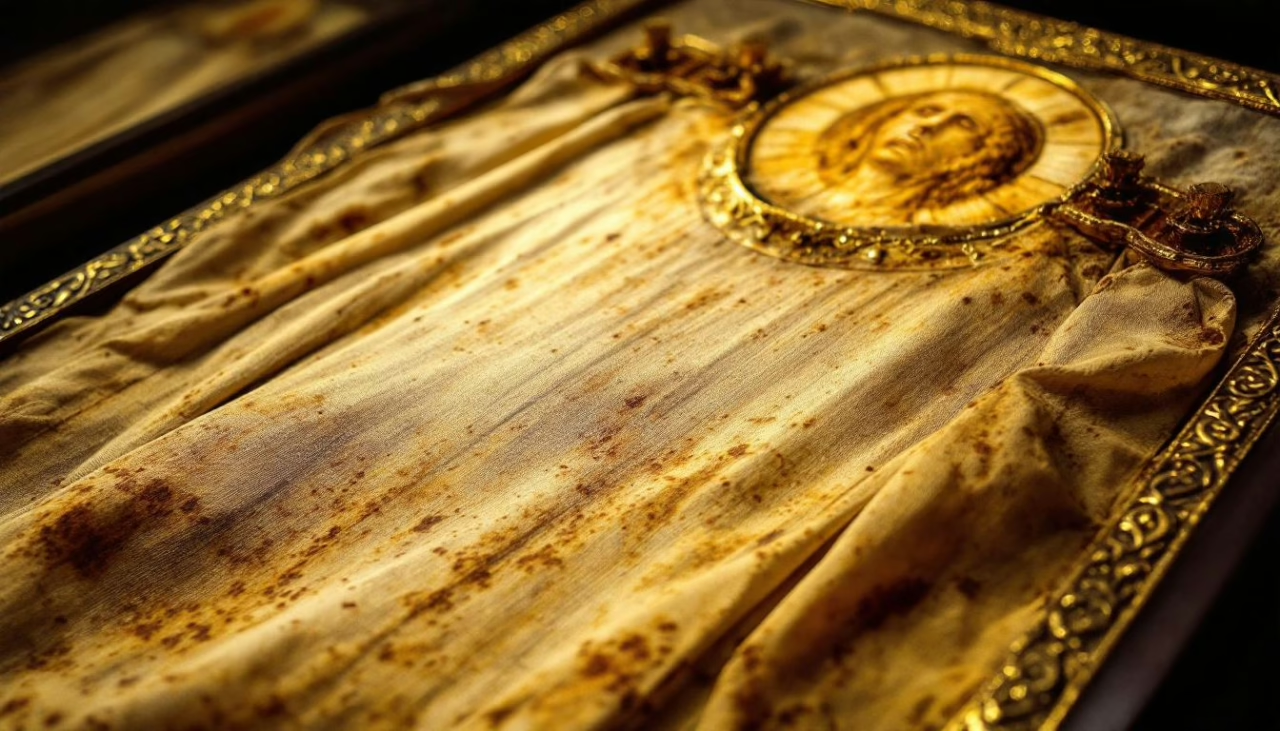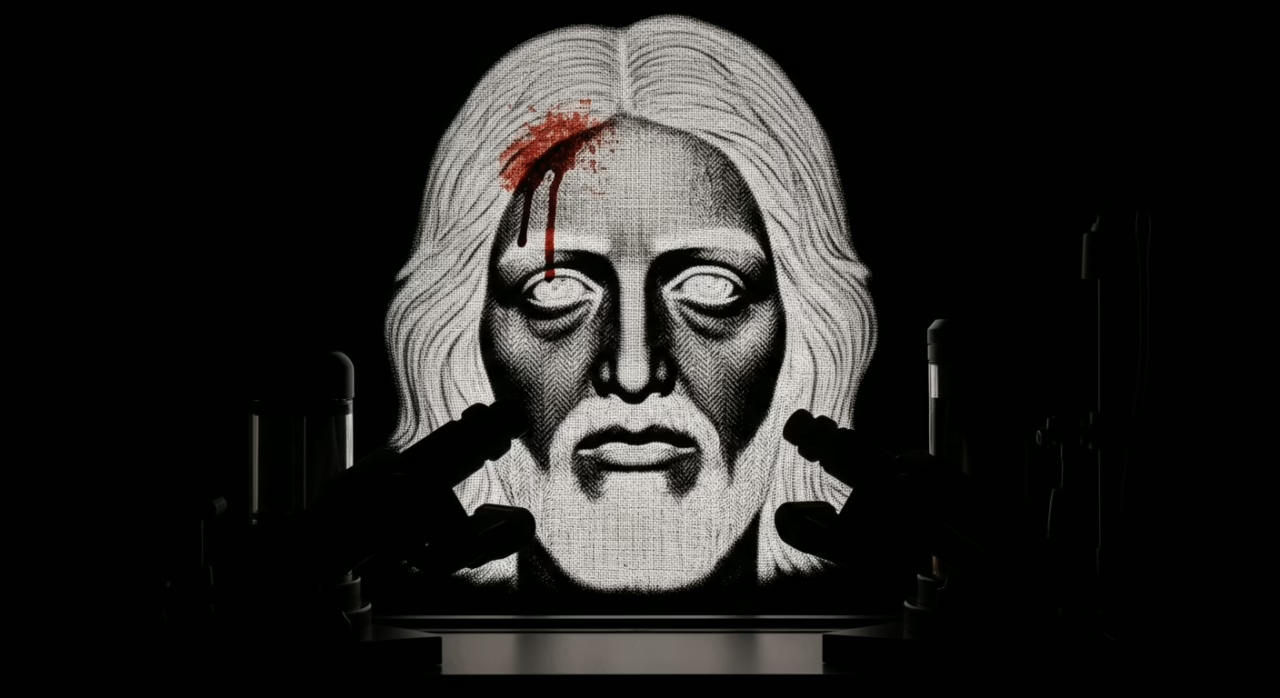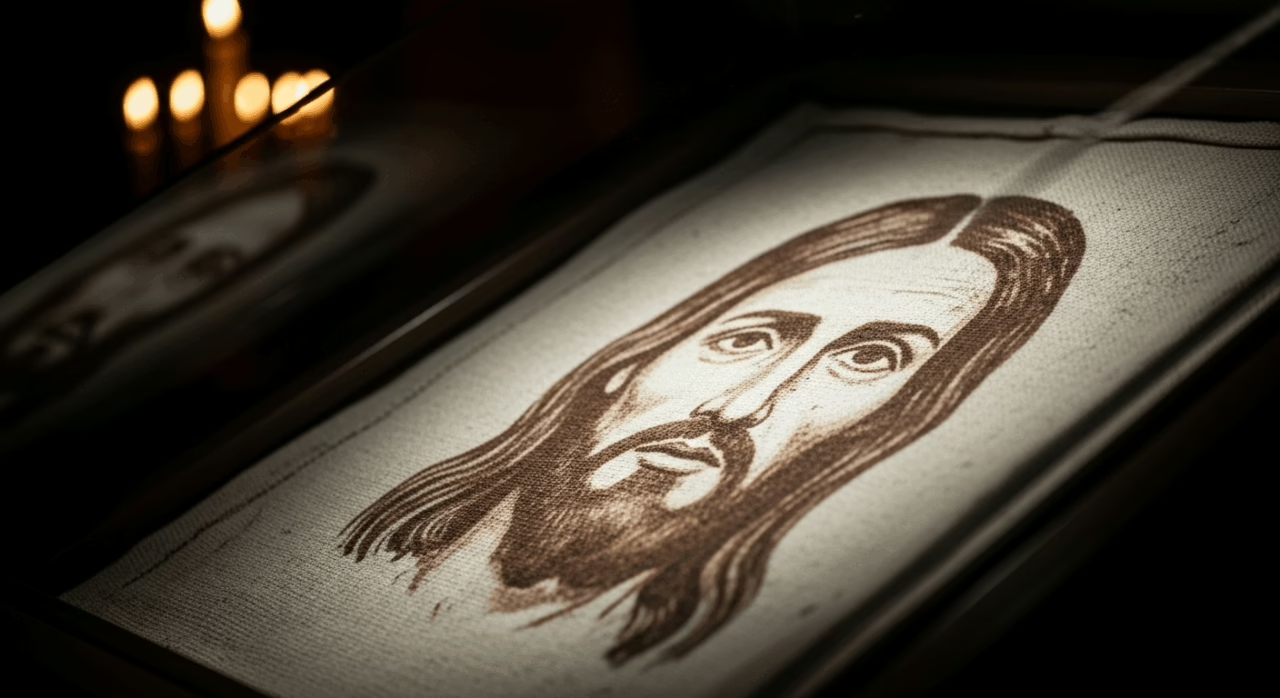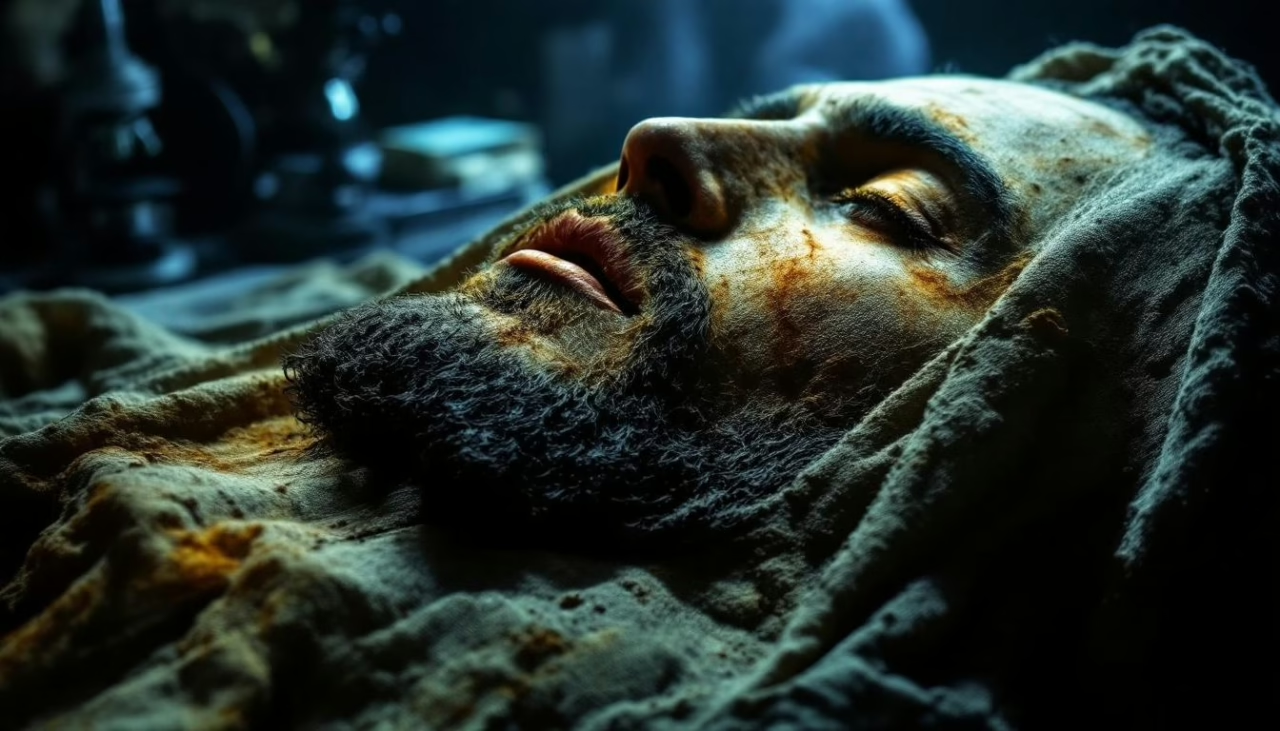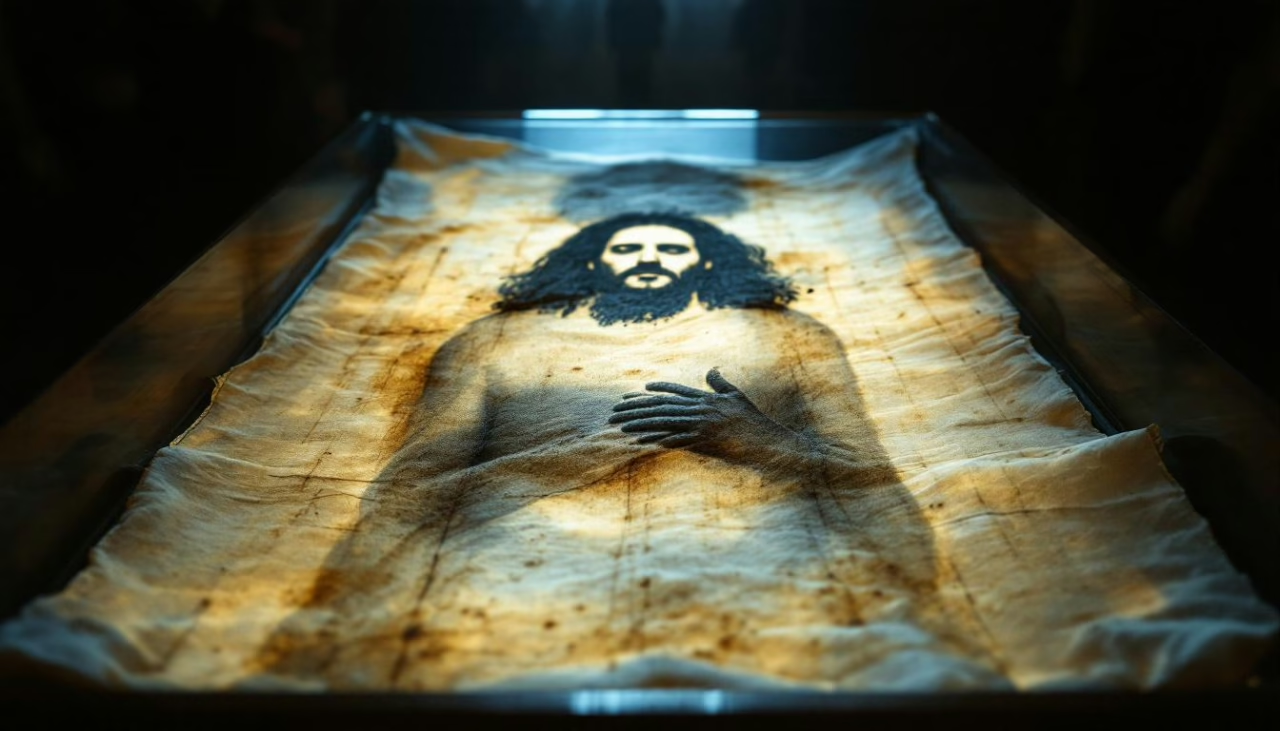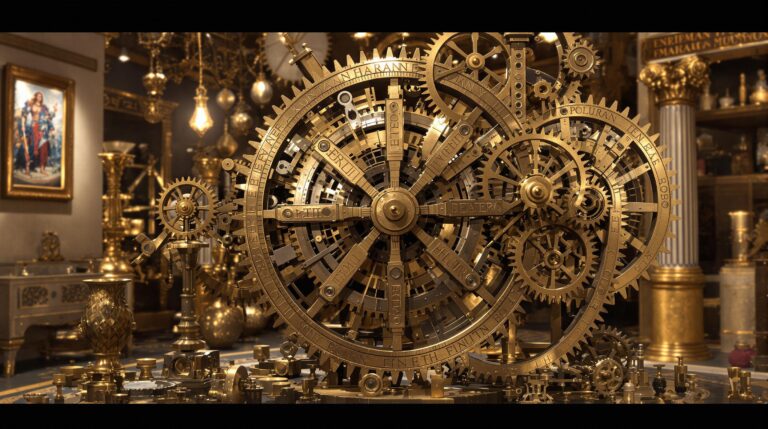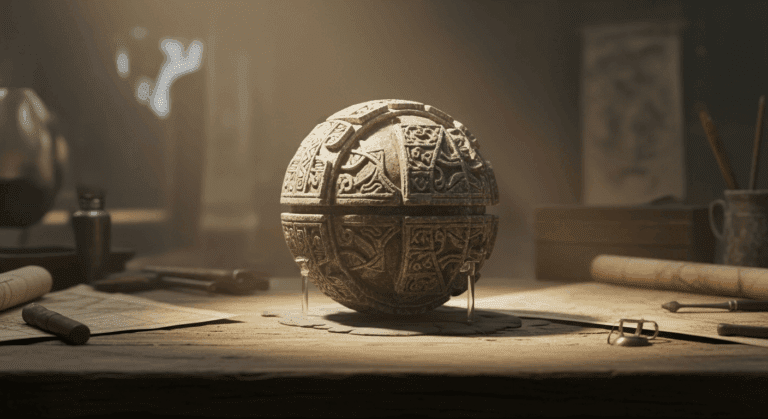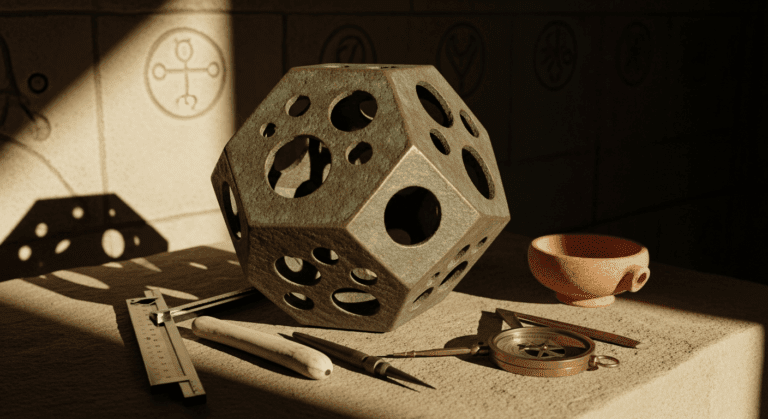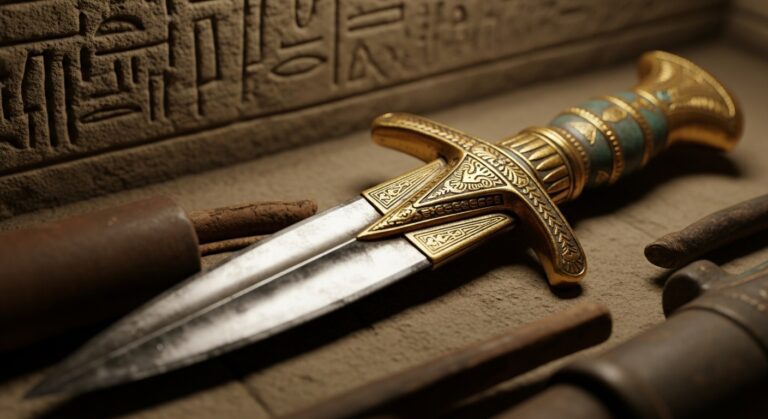The Shroud of Turin: Religious Mystery
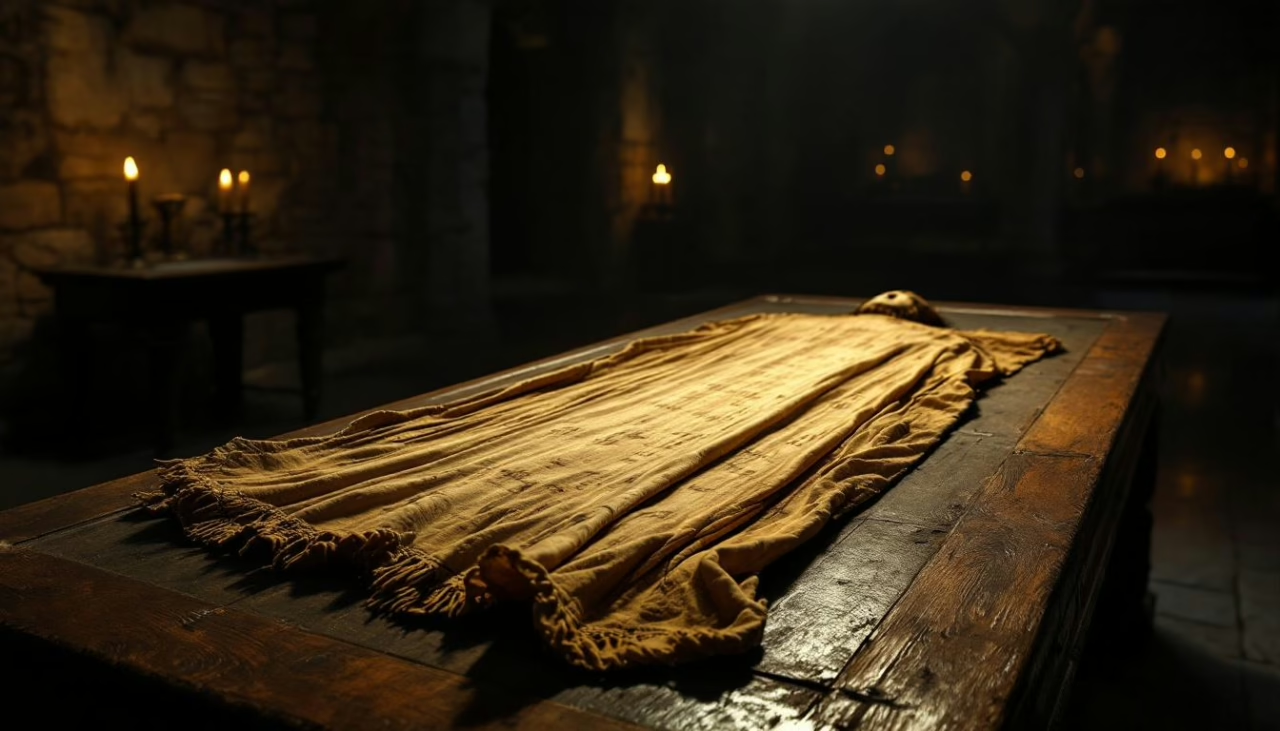
The Shroud of Turin: Faith or Fabrication? – The Shroud of Turin presents an enduring enigma at the intersection of faith and science.
This ancient linen cloth, bearing the faint image of a crucified man, has confounded experts for centuries while inspiring profound devotion.
Its weathered fibers contain what some believe are bloodstains from Christ’s wounds, while others maintain it represents medieval artistry.
The Shroud’s power lies not merely in questions of authenticity, but in how it compels humanity to confront mortality, suffering, and the possibility of resurrection.
Key Takeaways
Hide- The Shroud of Turin is a linen cloth bearing the image of a man with wounds matching Jesus Christ's crucifixion.
- Carbon dating placed the Shroud between 1260-1390 CE, though this remains contested due to potential contamination issues.
- No scientific consensus exists on how the image formed, with theories including radiation, chemical reactions, and artistic creation.
- Despite authentication controversies, millions of pilgrims visit Turin Cathedral to venerate what many believe is Christ's burial cloth.
- The Shroud contains forensic details consistent with biblical accounts of crucifixion that some claim would be impossible to forge.
Historical Origins of The Shroud of Turin and Early Discovery
The Shroud of Turin, a centuries-old linen cloth bearing the faint image of a man with wounds consistent with crucifixion, emerges into documented history during the mid-14th century in the small French village of Lirey.
Its provenance before this period remains shrouded in mystery, with competing narratives ranging from claims of its authenticity as Jesus Christ’s burial cloth to suggestions it originated as a medieval artistic creation.
The cloth’s first historically verifiable appearance coincides with an era of passionate relic veneration throughout Europe, when fragments of saints’ bones, splinters of the “true cross,” and other sacred objects commanded extraordinary devotion and sparked pilgrimages across the continent.
The Shroud’s Mysterious Appearance
The Shroud of Turin first entered historical records through the reverent accounts of medieval pilgrims, whose writings speak of a cloth bearing the miraculous image of Christ’s suffering.
Religious travelers from across Europe documented their journeys to view the relic, describing in hushed, awestruck tones the faint impression of a crucified man that seemed to transcend explanation.
The mysterious cloth captured the medieval imagination through its portrayal of divine sacrifice, igniting both fervent devotion and scholarly debate that would persist through centuries of scrutiny.
Early accounts from religious pilgrims
Religious pilgrims traversing medieval Europe left behind invaluable testimonies regarding early encounters with what many believe to be the Shroud of Turin, creating a fragmented yet fascinating historical trail long before its well-documented appearance in Lirey, France.
These pilgrim experiences, documented in sacred journeys throughout Christendom, reveal faith encounters through historical narratives and spiritual reflections that illuminate medieval Christianity’s profound reverence for physical manifestations of divine presence.
How the shroud first captured public imagination
Although historical records remain fragmentary, public fascination with the Shroud of Turin emerged dramatically in mid-14th century France, when it first appeared in documented history as an object of both veneration and controversy.
Artistic representations soon proliferated throughout Europe, weaving historical myths and cultural narratives that transcended mere religious significance.
Early media coverage, primarily through woodcuts and travelers’ accounts, cemented the Shroud’s place in medieval imagination.
Provenance and Historical Context
The Shroud of Turin‘s documented provenance emerges from the fog of medieval Europe, with its earliest verifiable appearance in France during the mid-14th century, though advocates claim its journey began in Jerusalem nearly 1,300 years earlier.
Historical records trace a winding path through Constantinople and various European locations, each transfer adding layers of veneration and controversy to the cloth’s remarkable story.
Its profound connection to the crucifixion narrative—displaying what appears to be the image of a scourged, crucified man—has made it an enduring enigma at the intersection of faith, history, and scientific inquiry.
Origins traced back to medieval Europe
Historical documentation of the Shroud of Turin first emerges definitively in mid-14th century France, a period marked by religious fervor and the proliferation of sacred relics throughout medieval Christendom.
The cloth appears in historical records connected to Geoffroi de Charny, who displayed it in Lirey around 1355, establishing its presence among venerated medieval artifacts along prominent European pilgrimage routes.
Its cultural significance transcended mere historical textiles, attracting faithful pilgrims across generations.
Its connection to the crucifixion narrative
Central to the Shroud’s enduring fascination lies its purported connection to Christianity’s defining moment—the crucifixion of Jesus Christ.
The cloth’s markings align remarkably with historical narratives of Roman execution practices, displaying crucifixion symbolism that believers interpret as evidence of divine contact.
Faith interpretations often emphasize resurrection themes, while spiritual reflections on the Shroud’s imagery continue to inspire profound theological discourse across centuries.
Scientific Investigations and Debates on The Shroud of Turin
Scientific investigations of the Shroud of Turin have centered on two critical aspects: its physical composition and the mysterious formation of its image.
The carbon dating performed in 1988 famously suggested a medieval origin between 1260-1390 CE, though subsequent analyses of the textile’s unique herringbone weave, pollen samples, and chemical properties have sparked intense scholarly debate about these findings.
Modern forensic techniques continue to examine how the haunting, anatomically precise image—which defies conventional artistic methods—could have been created, with theories ranging from direct contact with a body to various photochemical processes that remain unexplained by current scientific understanding.
Forensic Analysis and Carbon Dating
The quest to determine the Shroud of Turin’s age culminated in 1988 when scientists employed radiocarbon dating, yielding results that placed its origin between 1260 and 1390 CE, seemingly confirming the artifact as medieval rather than dating to the time of Christ.
This scientific proclamation, however, sparked immediate controversy among researchers who questioned the sampling methodology, pointing to potential contamination from centuries of handling, repairs with newer materials, and biological encrustations that might have skewed the results.
The debate continues unabated today, with newer forensic techniques examining blood patterns, pollen deposits, and textile characteristics challenging the carbon dating conclusions, creating an intellectual battleground where faith and science continue their ancient, intricate dance.
Methods used to determine the shroud’s age
Multiple forensic methods have been employed to determine the age of the Shroud of Turin, creating a complex tapestry of scientific investigation that spans several decades.
From radiocarbon dating techniques to historical debates concerning textile production methods, researchers have navigated age controversies through increasingly sophisticated authenticity tests.
These scientific methods, while rigorous, continue to yield conflicting conclusions, leaving the shroud’s precise chronology tantalizingly unresolved.
Controversial results and ongoing disputes
Why do the radiocarbon dating results from 1988—which famously placed the Shroud’s origin between 1260 and 1390 CE—remain at the center of heated scientific disputes decades later?
The shroud’s disputed authenticity persists precisely because of divergent interpretations of evidence.
Scientific skepticism confronts historical revisionism, creating a tension between faith versus fact that continues to fascinate researchers.
Media representation often oversimplifies this complex intersection of religious significance and empirical investigation.
Textile Composition and Image Formation
The Shroud’s textile composition has been identified as a three-to-one herringbone twill weave of linen, consistent with first-century Middle Eastern weaving techniques yet remarkably sophisticated for its era.
Scientific examination of the image itself reveals peculiar characteristics: no detectable pigments, paints, or dyes within the fibers, only a superficial discoloration affecting merely the topmost microfibers—approximately 0.2 micrometers deep—suggesting a process unlike conventional artistic methods.
Various theories attempt to explain this enigmatic image formation, ranging from direct contact with a body, radiation effects, natural chemical reactions, to medieval artistic techniques using materials now degraded beyond detection, each hypothesis carrying significant implications for the Shroud’s authenticity and origin.
Analysis of the woven fabric and pigments
Scientific investigations into the Shroud of Turin‘s fabric and pigments have yielded fascinating insights into this controversial artifact’s material composition.
Researchers have focused on:
- Woven patterns exhibiting herringbone twill characteristic of first-century textiles
- Pigment analysis revealing trace minerals inconsistent with human blood yet persistent through fiber composition tests
- Textile durability examinations suggesting environmental exposure patterns that challenge conventional dating methodologies
Colorfastness testing continues to puzzle experts seeking definitive conclusions.
Theories about how the mysterious image was created
Throughout decades of rigorous investigation, numerous theories have emerged regarding the formation of the mysterious image on the Shroud of Turin, each attempting to explain how such a detailed, three-dimensional impression could have been created without obvious brush strokes or directional marks.
The scientific explanation challenges range from radiation and heat theories to artistic interpretation possibilities involving medieval techniques, while cultural significance exploration connects image formation theories with their historical context implications.
Religious Significance of The Shroud of Turin and Symbolism
The Shroud of Turin transcends its physical existence as a mere artifact, embodying profound religious meaning for countless Christians who revere it as a tangible connection to Christ’s passion and resurrection.
Throughout centuries of Christian tradition, the cloth has inspired devotional practices, theological reflections, and artistic representations that capture the mystery of Christ’s suffering and triumph over death.
Its haunting image—the faint impression of a crucified man with wounds matching biblical accounts—has become an enduring symbol in religious iconography, compelling both the faithful and skeptics to contemplate the central narrative of Christianity with renewed perspective.
The Shroud in Christian Tradition
Throughout Christian tradition, the Shroud of Turin has been revered by many faithful as a miraculous artifact bearing the actual image of Christ, transferred through divine means during His resurrection.
Believers attribute various supernatural properties to the cloth, including healing powers, protective qualities, and the ability to inspire profound spiritual experiences when contemplated during prayer.
As perhaps the most famous relic associated with the crucifixion, the Shroud occupies a unique position in Christian iconography, offering what some consider tangible evidence of Christ’s suffering and triumph over death—a physical connection to the central mystery of the faith.
Beliefs about its miraculous properties
Within Christian tradition, why does the Shroud of Turin inspire such profound veneration and belief in its miraculous nature?
Devotees attribute three primary supernatural qualities to this enigmatic cloth:
- Miraculous healing powers when touched or viewed with faith
- Divine authentication of Christ’s resurrection, offering tangible proof amid spiritual doubt
- Transcendent spiritual significance as a relic that bridges heaven and earthly religious iconography
Its role as a relic of the crucifixion
Beyond its miraculous attributes, the Shroud of Turin occupies a singular position in Christian veneration as the purported burial cloth of Jesus Christ, bearing witness to the central mystery of the faith—the crucifixion itself.
Its relic significance transcends mere artifact status, shaping faith implications for believers worldwide. Through pilgrimage experiences, devotees encounter profound spiritual symbolism that connects them viscerally to Christianity’s foundational narrative of sacrifice and redemption.
Symbolism and Artistic Interpretations
The Shroud of Turin, beyond its physical characteristics, represents a profound tapestry of symbolic elements that some scholars interpret as deliberately encoded messages pointing to divine authorship.
Throughout centuries of Christian art, the Shroud’s distinctive frontal and dorsal images of a crucified man have shaped how artists depict Christ, influencing everything from Byzantine iconography to Renaissance masterpieces with their particular emphasis on wound placement and facial features.
These artistic interpretations continue to evolve as contemporary artists engage with the Shroud’s imagery, incorporating its mysterious negative-image qualities and anatomical precision into works that explore themes of suffering, transcendence, and the intersection of faith and scientific inquiry.
Hidden meanings and encoded messages
Throughout centuries of reverent study and intense scrutiny, scholars and faithful alike have searched for hidden meanings and encoded messages within the Shroud of Turin’s enigmatic image.
The cloth’s spiritual interpretations include:
- Geometric patterns suggesting divine proportions
- Hidden messages visible only through specialized photography
- Encoded symbolism representing Christ’s passion found in blood flow patterns
These elements reinforce its profound religious significance beyond mere artistic expressions.
Influence on religious art and iconography
Profound influence radiates from the Shroud of Turin into countless masterpieces of religious art, creating a visual vocabulary that has shaped Christian iconography for centuries.
Artists throughout history have drawn upon its distinctive iconographic analysis, incorporating religious symbolism that resonates across cultures.
The Shroud’s theological implications transcend mere artistic interpretation, challenging viewers to contemplate mortality, divinity, and resurrection through meticulous visual representation.
Controversies Surrounding the Shroud of Turin and Alternative Theories
The Shroud of Turin remains entangled in controversy, with numerous scholars arguing it represents a medieval forgery, possibly created as a religious relic during the 14th century when such artifacts commanded enormous spiritual and economic value.
Carbon-14 dating performed in 1988 famously dated the cloth to between 1260 and 1390 CE, seemingly confirming its status as a clever medieval creation rather than the authentic burial cloth of Jesus.
Recent scientific investigations, however, have challenged these conclusions, examining everything from pollen samples embedded in the fabric to peculiarities in the image formation that some researchers claim could not have been produced using techniques available in the Middle Ages.
Claims of Forgery and Medieval Deception
The Shroud of Turin’s authenticity has been vigorously challenged by scholars who point to a 1389 memorandum from Bishop Pierre d’Arcis, which explicitly describes the shroud as “cunningly painted” and created for financial gain.
Analysis by textile experts raises further doubts, suggesting the linen’s herringbone weave matches medieval European manufacturing techniques rather than first-century Middle Eastern methods.
These claims gained substantial credibility following carbon-14 dating tests conducted in 1988, when laboratories in Oxford, Zurich, and Arizona independently dated the fabric to approximately 1260-1390 CE, precisely within the medieval timeframe when critics argue such religious relics were commonly fabricated.
Arguments questioning its authenticity
Despite widespread veneration, rigorous scientific examination has cast substantial shadows over the Shroud of Turin’s authenticity.
Scientific skepticism centers on three critical findings:
- Carbon-14 dating from 1988 placing its origin between 1260-1390 CE
- Absence in historical records before the mid-14th century
- Microscopic analysis revealing paint pigments inconsistent with ancient burial practices
These historical discrepancies challenge faith interpretations while reshaping cultural perceptions.
Examination of historical documents and expert opinions
Numerous medieval documents and scholarly opinions offer a compelling counterperspective to the Shroud’s divine origins, suggesting instead a deliberate forgery crafted during Europe’s relic-obsessed 14th century.
Historical skepticism emerges prominently in document analysis from Bishop Pierre d’Arcis, whose 1389 memorandum explicitly describes the Shroud as “cunningly painted.”
Expert testimonies have further fueled the authenticity debate, often challenging religious interpretations with methodical historical examination.
Modern Perspectives and New Research
Recent technological breakthroughs, including advanced spectral imaging and chemical analysis, have introduced compelling new perspectives on the Shroud’s authenticity debate.
Researchers employing these cutting-edge techniques have uncovered previously invisible details in the fabric’s composition and questioned the reliability of the 1988 radiocarbon dating that placed the Shroud’s origin in medieval times.
This evolving body of scientific evidence, while not definitively resolving the centuries-old mystery, has prompted both skeptics and believers to reconsider their positions, transforming what was once a static historical controversy into a dynamic, multidisciplinary investigation at the intersection of science, history, and faith.
Latest technological advances in analysis
While traditional methods of analyzing the Shroud have yielded significant findings throughout its controversial history, twenty-first century technological innovations have revolutionized researchers’ ability to examine this enigmatic artifact with unprecedented precision.
Recent advancements include:
- Digital imaging and spectral analysis revealing previously invisible markings
- Chemical analysis techniques identifying trace compounds without damaging the cloth
- 3D reconstruction algorithms, enhanced by artificial intelligence, creating detailed volumetric models of the imprinted figure
How new findings are reshaping the debate
The technological advancements illuminating new aspects of the Shroud have dramatically altered the landscape of scholarly discourse surrounding this controversial artifact.
Recent scientific breakthroughs impact both religious interpretations evolution and historical narratives influence, challenging entrenched positions in the shroud authenticity debate.
As cultural significance shifts occur, researchers increasingly acknowledge the complexity of evidence, suggesting that this enigmatic cloth defies simplistic categorization within established paradigms.
Cultural Impact of The Shroud of Turin and Legacy
Beyond scientific debate, the Shroud of Turin has woven itself into the cultural tapestry of humanity, appearing in numerous films, novels, and artistic interpretations that explore its mystique and symbolic power.
Millions of pilgrims from across the globe have journeyed to Turin Cathedral since its public exhibitions began in 1578, creating a spiritual phenomenon that transcends religious boundaries and inspires profound personal reflection.
Conservation experts now employ cutting-edge technology to preserve this fragile textile against environmental degradation, balancing the competing demands of scientific study, religious veneration, and cultural heritage preservation with remarkable, if occasionally contentious, dedication.
The Shroud in Popular Culture
The Shroud of Turin’s mystique has permeated popular culture, appearing in films like “The Body” and novels such as Anne Rice’s “Christ the Lord” series, where it serves as both plot device and spiritual symbol.
Beyond entertainment media, the relic’s enigmatic nature has inspired numerous contemporary spiritual movements, from meditation groups focused on the Shroud’s perceived energy to artistic collectives attempting to replicate its creation through ancient techniques.
This cultural omnipresence demonstrates how, regardless of one’s position on its authenticity, the Shroud continues to captivate the imagination of artists, spiritual seekers, and audiences worldwide, transcending its religious origins to become a powerful metaphor for faith, mystery, and the human quest for transcendent meaning.
Depictions in films, literature, and media
Throughout cinematic history, artistic interpretations, and literary works, the Shroud of Turin has captured creators’ imaginations as a powerful religious symbol and mysterious artifact.
Its cultural representations manifest across media in three distinctive ways:
- Films exploring religious interpretations and divine authenticity
- Literary works examining shroud symbolism as metaphor for faith
- Artistic influences in visual media challenging viewers’ perceptions
Its role in inspiring modern spiritual movements
Modern spiritual movements have drawn profound inspiration from the Shroud of Turin, adopting it as both catalyst and cornerstone for diverse religious expressions that extend beyond traditional Catholic veneration.
The cloth’s enigmatic imprint serves as a touchstone for contemporary interpretations of faith, offering transformative experiences through spiritual symbolism.
Modern mysticism finds in this ancient artifact a bridge connecting historical Christianity with individualized spiritual journeys.
Global Pilgrimage and Conservation Efforts
The Shroud of Turin has become a focal point of global pilgrimage, drawing millions of devotees and curious observers to Turin’s Cathedral of Saint John the Baptist where elaborate conservation protocols protect the fragile linen.
These preservation efforts, including climate-controlled display cases and limited public viewings, represent a delicate balance between accessibility and protection of what many consider Christianity’s most enigmatic relic.
The international interest in the Shroud has transformed Turin into a center of faith tourism, with pilgrims from diverse religious backgrounds traveling thousands of miles to stand before this contested artifact that continues to inspire profound spiritual reflection despite—or perhaps because of—its unresolved historical status.
Efforts to preserve and display the shroud
Preserving the Shroud of Turin presents conservators with an extraordinary challenge, balancing the artifact’s fragility against its immense spiritual significance to millions of believers worldwide.
The conservation efforts involve:
- Maintaining precise environmental factors, including controlled temperature, humidity, and light exposure
- Implementing advanced preservation techniques during rare public exhibitions
- Addressing display challenges through custom-designed, inert containers that minimize handling
Impact on faith communities and historical tourism
Despite ongoing scientific debates surrounding its authenticity, the Shroud of Turin has profoundly shaped religious devotion and cultural tourism across generations and geographical boundaries.
Each year, millions undertake relic pilgrimage journeys to Turin, engaging in spiritual symbolism exploration while contributing to regional tourism.
Faith community engagement remains robust, with cultural heritage conservation efforts balancing accessibility against preservation concerns.
Wrapping Up
The Shroud of Turin remains suspended between faith and science, its mysteries persisting despite technological advances.
Coincidentally, as scientific inquiry intensifies, so too does religious devotion to this enigmatic cloth.
Whether authenticated or discredited, the Shroud transcends mere historical artifact status, serving as a profound nexus where empirical investigation and spiritual yearning converge—a reflection of humanity’s enduring quest for tangible connections to the divine.
